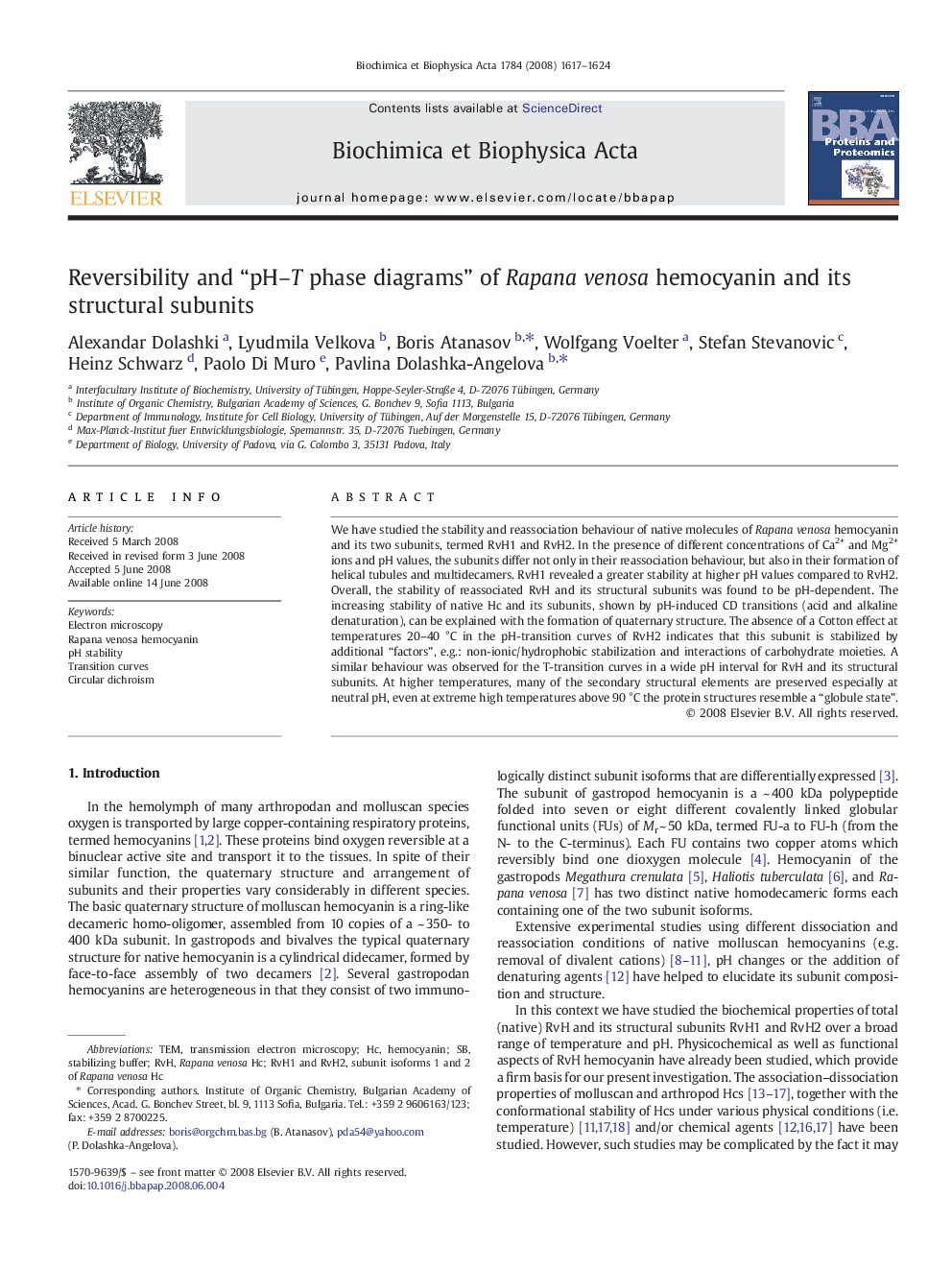| Article ID | Journal | Published Year | Pages | File Type |
|---|---|---|---|---|
| 1180464 | Biochimica et Biophysica Acta (BBA) - Proteins and Proteomics | 2008 | 8 Pages |
Abstract
We have studied the stability and reassociation behaviour of native molecules of Rapana venosa hemocyanin and its two subunits, termed RvH1 and RvH2. In the presence of different concentrations of Ca2+ and Mg2+ ions and pH values, the subunits differ not only in their reassociation behaviour, but also in their formation of helical tubules and multidecamers. RvH1 revealed a greater stability at higher pH values compared to RvH2. Overall, the stability of reassociated RvH and its structural subunits was found to be pH-dependent. The increasing stability of native Hc and its subunits, shown by pH-induced CD transitions (acid and alkaline denaturation), can be explained with the formation of quaternary structure. The absence of a Cotton effect at temperatures 20-40 °C in the pH-transition curves of RvH2 indicates that this subunit is stabilized by additional “factors”, e.g.: non-ionic/hydrophobic stabilization and interactions of carbohydrate moieties. A similar behaviour was observed for the T-transition curves in a wide pH interval for RvH and its structural subunits. At higher temperatures, many of the secondary structural elements are preserved especially at neutral pH, even at extreme high temperatures above 90 °C the protein structures resemble a “globule state”.
Keywords
Related Topics
Physical Sciences and Engineering
Chemistry
Analytical Chemistry
Authors
Alexandar Dolashki, Lyudmila Velkova, Boris Atanasov, Wolfgang Voelter, Stefan Stevanovic, Heinz Schwarz, Paolo Di Muro, Pavlina Dolashka-Angelova,
